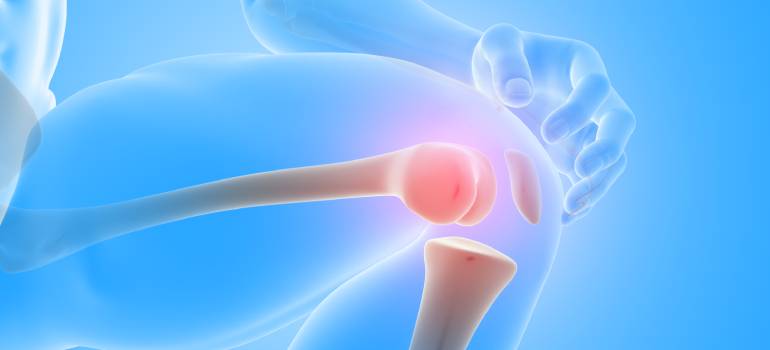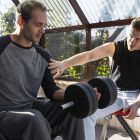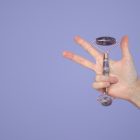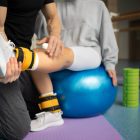An anterior cruciate ligament injury is the most common knee injuries during sports activities.With growing researches rehabilitation after ACL injury has shown tremendous changes in the outcome. An awareness of the health benefits of improved physical fitness has led to an increase in the activity level of the older population and an increase in ACL injuries. Non operative treatment of ACL injury may be indicated in older, sedentary people however in active people (young or old), the ACL deficit knee has a high incidence of instability which might lead to meniscal tears, articular damage, and early degenerative changes. ACL has a primary healing potential and there are reports of having a healed ACL, although not in complete rupture.
The initial treatment goals after ACL injury is to prevent swelling and reduce pain. The result of various studies shows that a proper rehabilitation protocol initiated within 4 weeks of ACL injury along with braces can result in a good clinical outcomes.
The patients who initiated the non-operative treatment within 2 weeks after the ACL injury showed better chance of resulting in both tear grade 1. Assessment of swelling and effusion, instability is done at initial visit.
The natural ligament healing is similar to other vascular soft tissues, occurring in three stages i.e haemorrhage and inflammation, proliferation scar formation, and remodelling. Each of the stages of healing depends upon an adequate blood supply for the delivery and removal of cells and metabolic substrates at the site of injury.
Exercise protocol for ACL deficit knee- treatment within 4 weeks of injury
⇨ Goals and intervention
Reduction of swelling and effusion. Use of brace /kinesio taping and ice pack has been found beneficial.
Reduction of pain. Pain relieving modalities such as IFT (interferential therapy) ultrasound
Restoring voluntary muscular activation
To promote healing. LASER therapy has been found helpful in the treatment of ACL injury
Restoration of normal range of motion of knee joint, patellar mobility (especially knee extension& flexion)
Maintain good mental attitude throughout the rehabilitation program.
Graded exercises to primarily strengthen hamstring, quadriceps, calves, and adductors have been shown to improve outcomes.
⇨ Proprioception training to improve the joint position sense.
An exercises program of 12 weeks within the preceding 4 weeks has been found helpful in cases of ACL injury.
Week 1st- Limited hinge brace was applied in order to prevent further injury, particularlyaffected by pivot shifting motion, protect blood clot formation, and reduce anteriorly displacing force on tibia.
Range of motion exercise, quadriceps setting and straight leg raising exercise are rigorously encouraged while wearing the brace. A gradual increase of exercise for improving muscle strength and endurance is implemented while maintaining adequate protection to allow healing of the injured ACL (Phase IV; until 12 weeks). The strength and number of repetition of exercise are increased according to the capacity of each patient under the supervision of physical therapists. Upon successful completion of previous phases, the non-operative treatment protocol proceeds, involving active rehabilitation and exercises that ultimately prepare the patient to return to sports (Phase V-VI; until 12 months). At the end of phase IV (at 12 weeks into the protocol), the knee is examined with Lachman test and pivot-shift test (PST). If a hard endpoint is not palpable on LT or PST was positive of more than grade 2, surgical intervention is recommended. Home exercise are continued and rehabilitation counselling is done according to the knee stability and muscle strength at outpatient visits. A period of 3 months (12 weeks) program is advised before deciding for surgical intervention. If failure to recover from conservative management, these exercises were improve the muscular strength thereby help in post-operative early recovery.
⇨ Anjum Fatima
Senior physiotherapist
Orthocure clinics, Gurgaon

